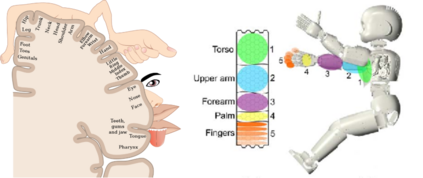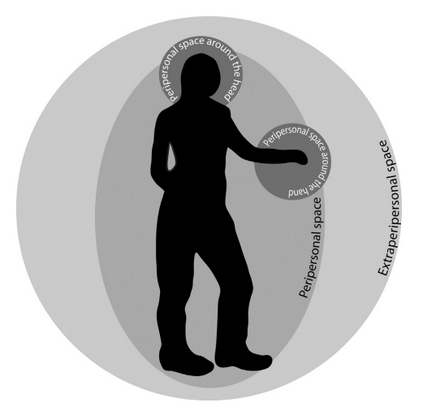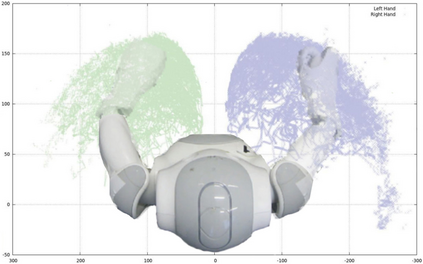Safe human-robot interactions require robots to be able to learn how to behave appropriately in \sout{humans' world} \rev{spaces populated by people} and thus to cope with the challenges posed by our dynamic and unstructured environment, rather than being provided a rigid set of rules for operations. In humans, these capabilities are thought to be related to our ability to perceive our body in space, sensing the location of our limbs during movement, being aware of other objects and agents, and controlling our body parts to interact with them intentionally. Toward the next generation of robots with bio-inspired capacities, in this paper, we first review the developmental processes of underlying mechanisms of these abilities: The sensory representations of body schema, peripersonal space, and the active self in humans. Second, we provide a survey of robotics models of these sensory representations and robotics models of the self; and we compare these models with the human counterparts. Finally, we analyse what is missing from these robotics models and propose a theoretical computational framework, which aims to allow the emergence of the sense of self in artificial agents by developing sensory representations through self-exploration.
翻译:安全的人类机器人互动要求机器人能够学会如何在人的世界\sout{human's world}\ rev{space 人居住的空间中适当行为,从而应对我们动态和无结构的环境构成的挑战,而不是提供一套严格的操作规则。在人类中,这些能力被认为与我们在空间中感知我们身体的能力有关,与在移动中感知我们肢体的位置有关,与其它物体和物剂有关,并控制我们身体器官以便有意地与它们互动。在本文中,我们首先审查下一代具有生物激发能力的机器人,我们首先审查这些能力的基本机制的开发过程:人体机能、人间空间和人体中活跃的自我的感官表现。第二,我们通过自我分析发展感官表现和机器人自我模型的机器人模型模型;我们将这些模型与人类对应方进行比较。最后,我们分析这些机器人模型所缺的东西,并提出一个理论计算框架,目的是通过自我分析发展感官表现,使自我感官代理感官产生自我感官感官。













